To misquote the famous lines (on marriage) from ‘Punch’ magazine :
“Advice to those about to go walking in August …… don’t. ”
First, a salutary story. In mid-June this year, a group of French walkers took the boat to Elafonisi, and around 11.15am set off along the E4 path towards Paleochora. By early afternoon temperatures had reached over 40c (104f) in the shade, and on this route there is virtually none, and no water either, unless you can locate the spring above Agios Ioannis church (which this year may well be dry.) When they reached the cantina at Krios beach c. 4.30pm, several were suffering from heat exhaustion and severe dehydration, one so seriously he had to be taken by ambulance to Paleochora, and from there air-lifted by helicopter to Chania hospital, where fortunately he made a full recovery.
Walking in August is of course quite feasible with an early start. The 6.15am KTEL bus to Omalos gives access not only to Samaria, but also to the Figou and Agia Irini gorges, above them the high-level E4 path to Koustoyerako, and lower down, the Kambanos gorge and Kamaria valley, although all these would result in a hot afternoon in Agia Roumeli or Sougia, albeit in shade and sea whilst waiting for the ferry back to Paleochora.
The early morning (7.30am) bus to Chania will drop you off at Spaniakos, Vlithias, Plemeniana,
Kandanos, Floria, Mesavlia and Kakopetros for walks described in the “Explore” series, returning on one of the buses leaving Chania at 10.45am or 12.45pm, (or an earlier one at 8.45am.)
Alternatively, here’s a short walk close to Paleochora, best enjoyed in the late afternoon or evening as the day begins to cool down. Drive, or take a taxi, to the turning for Vasilaki, just 3km NW from Paleochora on the road to Voutas.
The track along to the few houses of Vasilaki gives good views into the valley of Tsaliana below, and north to the high mountains either side of Sarakina (see ‘Explore’ September 2015).
This is rural Crete, albeit only a (long) stone’s throw from popular tourist beaches, and you will pass sheep, goats, chickens and barking (but safe) dogs as you leave the “village”, through a gate, and into open country.
Below left is the blue-roofed Agios Georgios church, but save this for the way back and hope to catch the sunset. The track winds around the hillside, passing animal enclosures, then climbing to a threshing circle and an adjacent (ruined) building ; nearby terracing indicates that cereal crops were grown here, and the area once housed a greater community.
Turn right here, to reach the original Ag. Georgios church, long since abandoned.
Just above, the track crosses the ridge, at 400m, giving wide views across the lower Kakodikianos valley, where regular “Explore” readers and walkers can identify the paths around Spaniakos, Profitis Ilias church above Kadros, and the ruined Turkish fortress or “pirgos”.
You could return from here, but it would be a shame not to continue a further 500m, to where the track ends by an area of oleander bushes and an old plane tree, their presence indicating a water source. And here is a spring, a trickle flowing even during this hot dry summer, and much appreciated by the two dogs. Nearby is another ruined ‘church’ (we think Ag. Dimitrios), with a small shrine, built in gratitude for the gift of water emerging from the hillside.
Return to Vasilaki by the same route, with surprisingly different views, especially to the west in the late evening, if you happen to catch “the sundown splendid and serene.”
If you came by taxi, there’s a 3km walk home, with a wonderful panorama of Paleochora and Pachia Amos beach, and then finally down through Panorama itself into town.
Allow three hours for this walk, but remember that darkness falls very quickly here, turn back if in any doubt, and take a torch with you, just in case ….

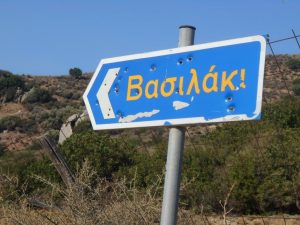

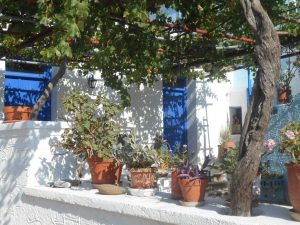
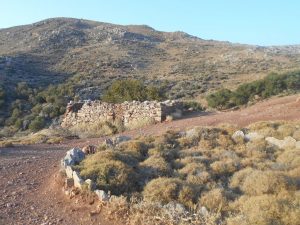
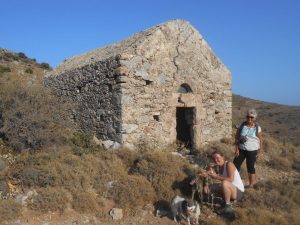
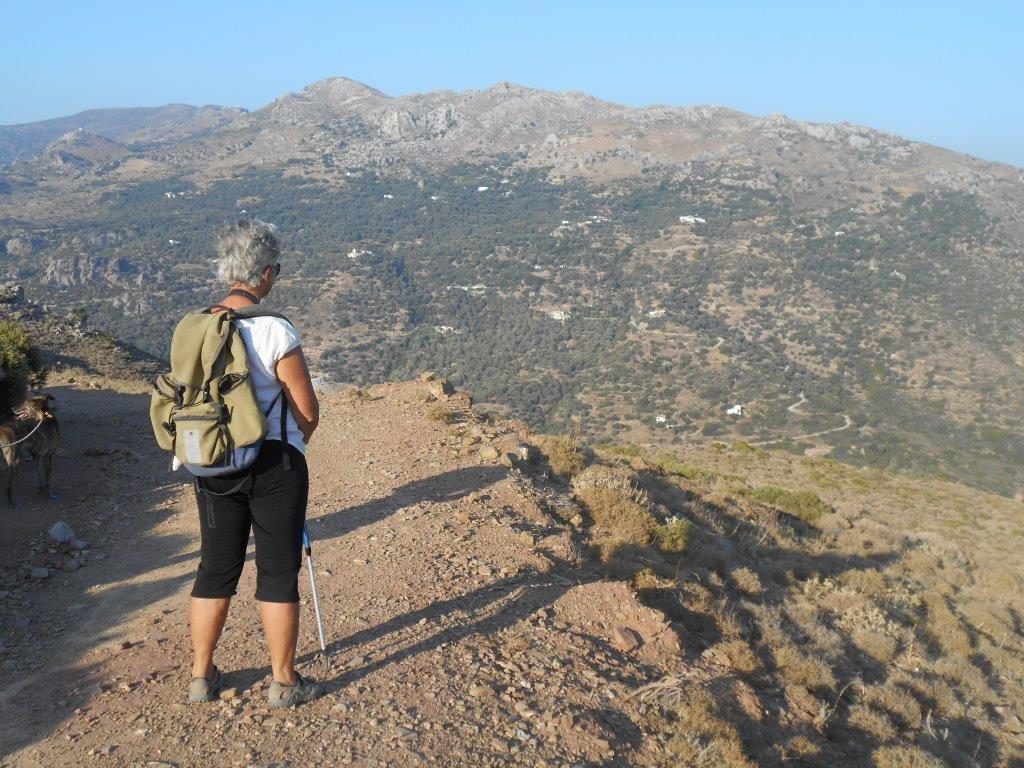
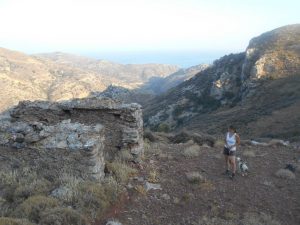
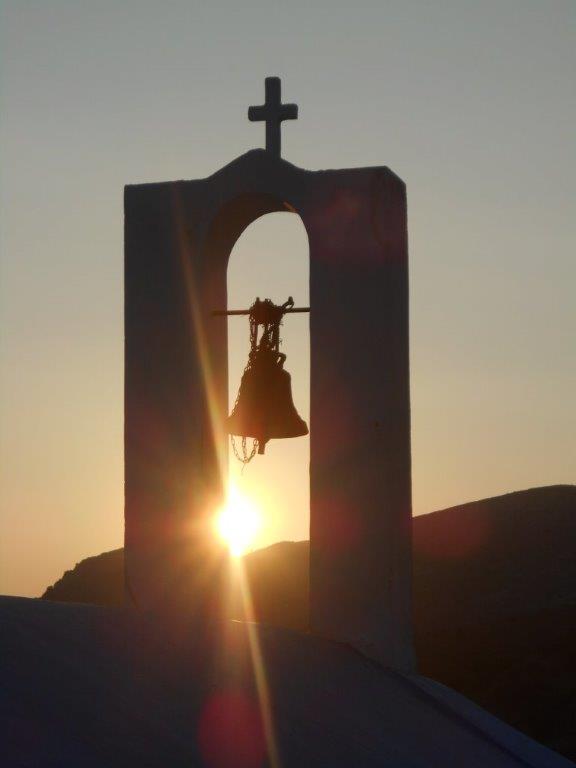

Recent Comments